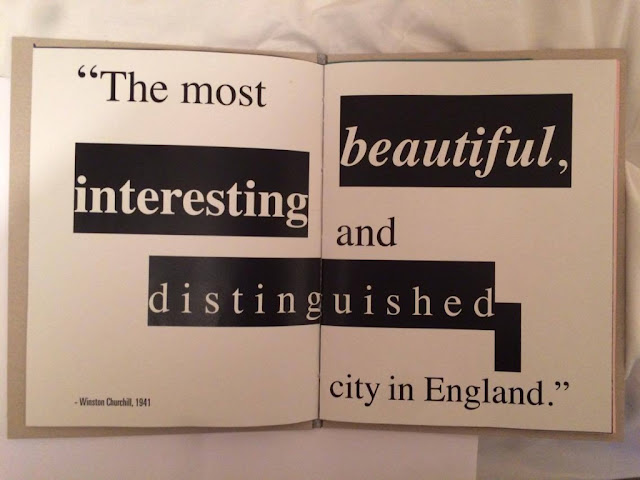‘Alright my luvver?’
'Babber' - Definition: A term of endearment, meaning 'baby' or 'friend'. Babber is commonly directed to a loved one, yet some crazy cats are happy to call any old stranger this.
’Ark at ee' - Check you out! (in a sarcastic and playful manner).
'Brizzle/Bristle'
‘Proper’
These quotes made me rethink areas of my publication that can be tailored to make the publication more personal to Bristol. For example, instead of having 'Alright Bristol' as the title of my zine, I have decided to use 'Bristol Babber' as the alliteration creates rhythm making it more memorable.
To introduce the publication, I changed the tone of voice to suit Bristolian's native tongue. Instead of having the introductory passage on the first page - I introduced 'ARK AT EE' (Check You Out) which is friendly and ambiguous, depending on whether the audience is familiar with the dialect. This is still appropriate for people unaware of the saying because it will intrigue the audience to read on.
Chose to use Univers 67 Bold Condensed as it's bold and heavy weight will impact the audience. All focus is on the type due to the large amount of white space:
Altered the leading so that the type was more condensed:
The introduction can now go on the inside of the leaflet.
I gave my images a lot of white space so that they could breath, however the city of Bristol is vibrant and busy so in order to connote this I began to manipulate page compositions and the pagination. The addition of quotations helps me to achieve this.
Being expressive and breaking the rules of design reflects Bristol's rebellious and creative culture:
I used Times, a traditional typeface, but manipulated it by deleting the fill in order to make it more engaging. Again, this reflects Bristol's rebellious style. Adding the quotations and juxtaposing them with the images reflects the streets of Bristol so the audience can experience Bristol through the pages.
In order to further combine image and text, I pasted one of my images inside the text:
The audience will be exposed to the texture and context of Bristol through the type, however due to the small stroke of the type, the image isn't visible further adding to the ambiguity. Using Univers 67 Bold Condensed makes the typography look friendly, appropriate for the greeting.






































































